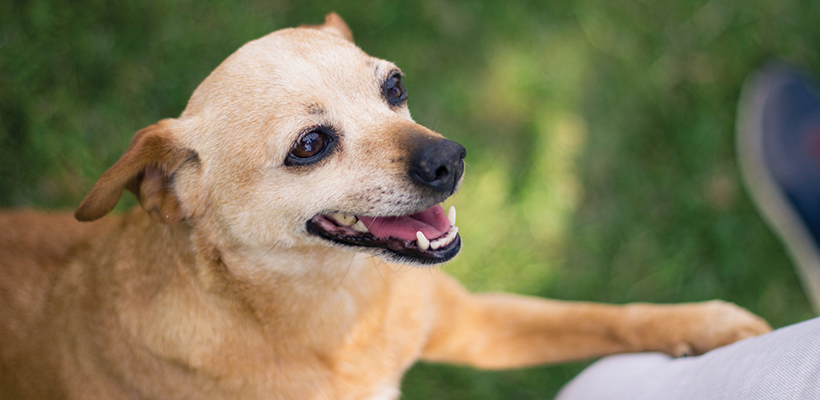
This guest article is contributed by The Vets
Dog Paw Care Guide
Your dog’s paws are an integral part of his or her overall health. They support their body weight and are essential for their everyday activities, from walking, running to resting. The pads, which are made up of fats and elastic fibers, cushion your dog’s joints and bones from shock, protect tissues within their paws, and allow them to move around freely.
Paw pads also help dogs determine the type of surface they are walking on and control their body temperature. If you’re soon to bring your adopted dog home, read our ultimate guide to dog paw care. Bonus extras: tips and tricks from the experts on how to clean and clip your dog’s nails.

Understanding dog paw pads
A layer of pigmented skin, usually pink or black, covers the paw pads’ fatty tissue. These provide some insulation for your dog’s paws from cold surfaces during winter. They are also an essential part of your dog’s foot structure, and they work in tandem with his or her nails. Paw pads aid in your dog’s balance while also providing traction, protection, and shock absorption.
If you plan on taking your dog on daily walks or know they’ll be walking on rougher surfaces occasionally, you will expose them to calluses. Begin by using these surfaces for shorter periods to allow the pad to develop resistance over time.
How to care for dogs’ paws
We are so focused on our dog’s fur, food, treats, and grooming that we end up forgetting about paws. It is an equally important part of a dog’s body that requires as much attention. Naturally, a dog’s paw is a sensitive spot, and some dogs dislike having it touched, so be cautious when handling it. Treats can help, and if you are not sure, start slowly.

Tip #1. Consider the surface your dog walks
The first step towards caring for your dog’s paws is to protect them. The surfaces your dog walks on can have a significant effect on their paw pads’ wellbeing. In the summer, avoid hot pavements and floors that have recently been washed with potentially toxic chemicals; these can be extremely damaging to your dog’s paws, and can cause terrible blistering.
Tip #2. Clean between the paws
Remember to check between the pads of your dog’s paws while grooming them, as debris often gets stuck there. With a pair of tweezers, you can quickly remove this, but you must be careful not to injure or cause any form of discomfort to the pet in the process.
Check the length of fur growing between the dog’s paw pads as well. Some dogs have a lot of fur growing on their paws, but that depends on the breed. If you don’t feel comfortable trimming it yourself, a dog groomer or veterinarian will help.

Tip #3. Watch for licking and scratching paws
If your dog licks or chews at his or her paw pads, it is a clear indicator that a nagging irritant needs to be gotten rid of before the dog damages them. If the chewing or licking becomes intense, it could indicate an allergic reaction that needs to be checked by a professional. Allergies are more common in these dog breeds:
- Beagles
- Bichon Frise
- West Highland
- White Terriers
- Poodles
If you have a mix of the above breeds, your pooch may also be more susceptible to allergies. Chewing and licking may also signify Obsessive Compulsive Disorder or a minor cut or sore. This action can cause your dog’s healing to be delayed, so keep an eye on his paws and treat any minor injuries or behaviors as soon as you notice them.

Tip #4. Clip those nails
Normal exercise is necessary for maintaining dog nails at a comfortable length. Movement on rough/hard surfaces like pavements can help to file them down gradually. Nonetheless, some dogs may need nail clipping to keep their nails in good shape. Although some dogs dislike getting their nails trimmed, clipping a dog’s nails is an essential part of caring for them. Claws cover a dog’s paw pads, but they must be kept in good condition for the entire foot’s health.
When trimming a dog’s nails, be careful not to cut the soft pink tissue, which is an essential part of blood supply. If you bruise it, it can cause a lot of discomfort to your dog and make the process more stressful than it needs to be.
Ensure you follow these steps when clipping dog nails:
- Take a strong but gentle hold on their foot
- At the end of each nail, snip a small piece off
- Stop immediately if the nail feels spongy, as this means you are cutting too far up and risk cutting the quick
- To create a positive link with getting their nails trimmed, give your dog a treat at the end
- All the while, speak calmly to the dog
Final thoughts
Much like grooming and exercise, at-home paw care should be part of your daily pet care routine. In addition to all the attention focused on these canines, it is critical that the environment is well-maintained to ensure dog paws are not subjected to any risks. The above guide should help you raise a happy, healthy dog.
